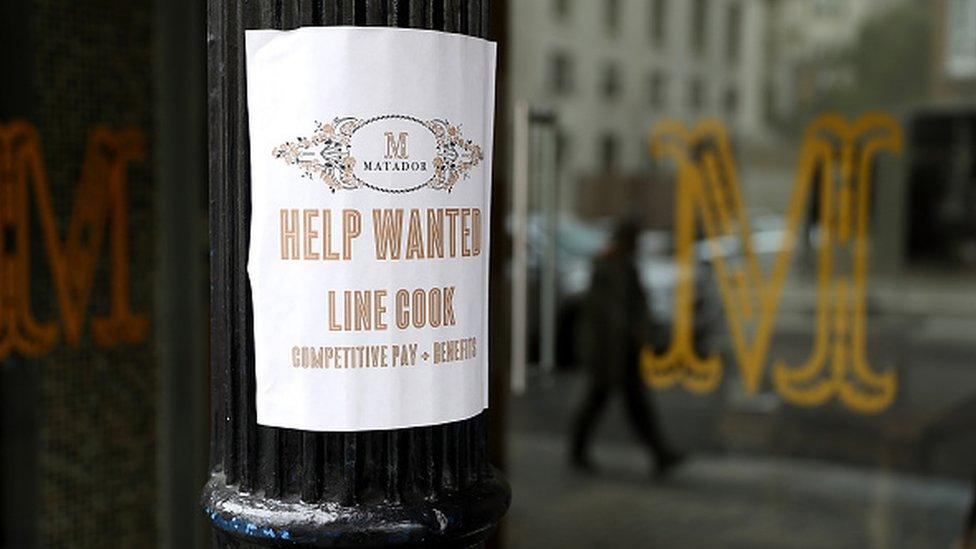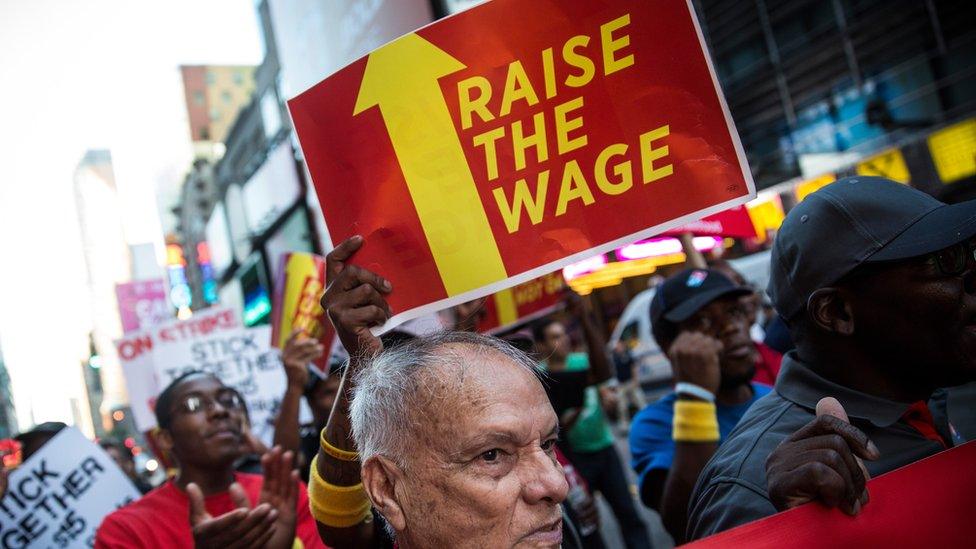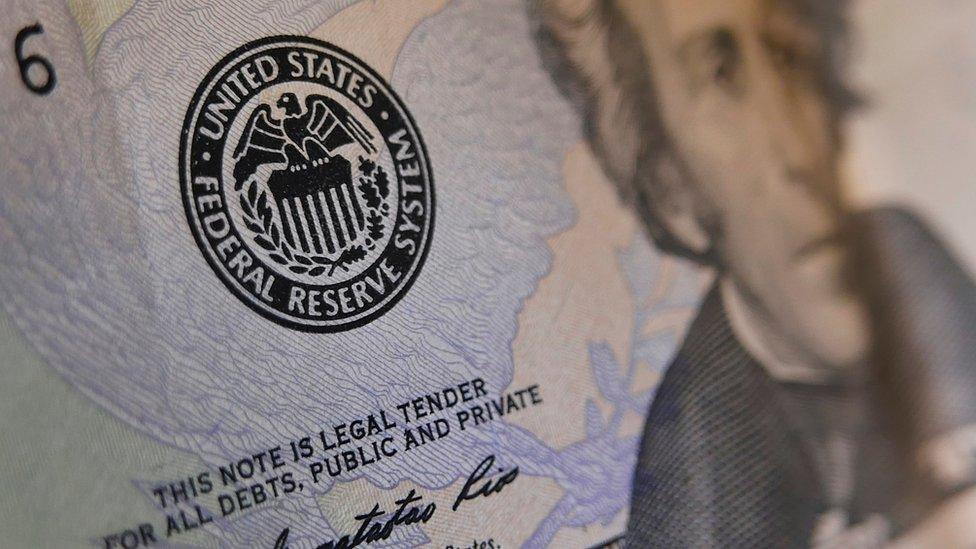US jobs growth beats forecasts in July
- Published

The US economy added a stronger-than-expected 255,000 jobs in July, fuelling speculation that interest rates could rise before the end of the year.
The figure was below June's upwardly revised figure of 292,000 jobs, but was far higher than analysts' forecasts of between 175,000 and 180,000.
The US unemployment rate remained unchanged at 4.9%.
Dennis de Jong from UFX.com said July's figure reveals a "strong but not spectacular US economy".
He said the number "represents more of a return to the form of the first six months of the year".
The US Fed recently signalled that it was on course to increase interest rates this year as "near-term risks" such slowing employment receded.
However, subsequent data revealed that the US economy grew at a slower pace than expected in the second quarter of the year.
'Steady improvement'
The Fed's next policy meeting is due in September, but analysts think they could wait until later in the year to take any action.
Chris Williamson, chief economist at IHS Markit, said: "The steady job market improvement and keeps alive the possibility of the Fed hiking rates again this year, but worries about sluggish economic growth and deteriorating productivity, as well as uncertainty created by the presidential election, suggests that any tightening of policy will be delayed until December."
Doug Duncan, chief economist at Fannie Mae in Washington, said: "It shows the economy from a labour perspective is heading in the direction that the Fed wants. It gives the Fed some support for those looking an increase in rate by the end of year.

He added: "The Fed is still watching international development. The Bank of England made a pretty strong move this week, but the UK data so far don't suggest a strong downdraft with Brexit. A lot could still occur with European banks."
The largest growth in US employment - some 70,000 new jobs - came from professional and business sectors, in particular computing.
The healthcare industry also recruited heavily, taking on an additional 43,000 staff last month.
Mining companies recorded the biggest fall in new jobs, down by 6,000, and since reaching a peak in September 2014 employment in the sector has declined by 26%.
Wage worries
Average hourly pay also rose, up 0.3% between June and July, against a forecast of a 0.2% rise. In the 12 months to July, pay increased by 2.6%, which was the same annual rate of growth as in June.
Wage stagnation has been an issue closely watched by the Fed and commented on in the presidential election.
A survey by CareerBuilder and Emsi Research released on Friday, suggested that over the next five years the number of middle-income jobs created could slow down, while low and high paying jobs are added to the market.
The research found high-wage and low-wage jobs were both expected to grow by 5%, but the number of middle-income jobs was expected to rise by just 3%.
Sixty one per cent of the occupations expected to lose jobs over the next five years are middle-income jobs.

Trade deficit
While jobs data was lifting markets, investors also learned that the US trade deficit had widened to its largest position in 10 months.
The gap was driven by increasing oil imports and expanding orders of Chinese-made computers, mobile phones and clothing.
The Commerce Department reported that the deficit widened in June by 8.7% to $44.5bn (£31bn), up from the revised May figure of $41bn.
The US trade deficit drags on national growth because it means US companies are selling less overseas.
- Published29 July 2016

- Published27 July 2016

- Published8 July 2016
